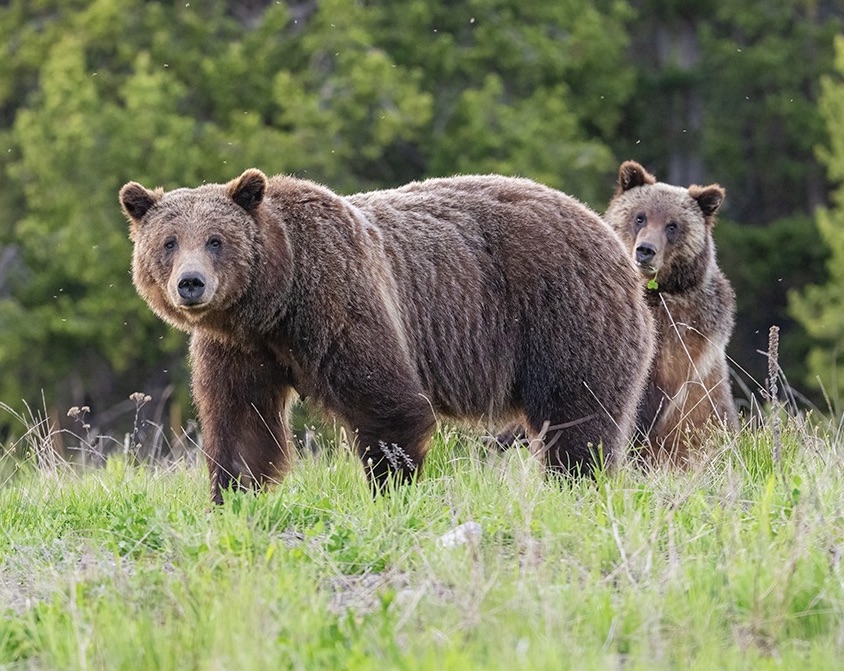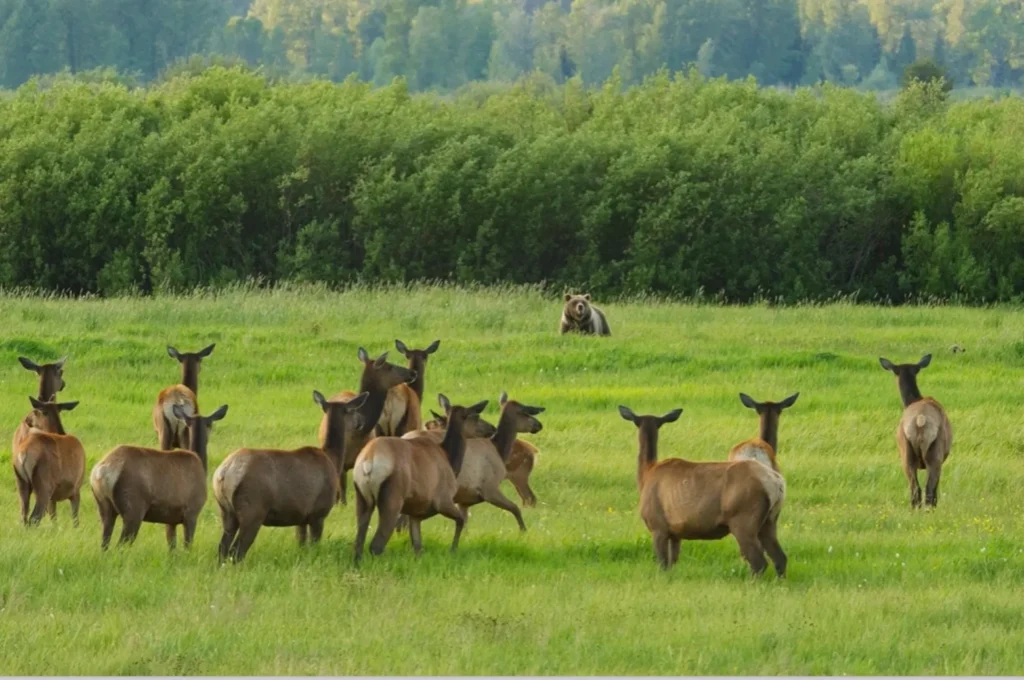399: In Life Not A Trophy Nor Should She Be In Death
399: In Life Not A Trophy Nor Should She Be In Death

by Thomas D. Mangelsen and Todd Wilkinson
That awful dreaded day arrived. Jackson Hole Grizzly 399 has left us. Her passing was inevitable and painful no matter what form it took. Now that it has happened in a most horrific way, there is the matter of how to move forward. In particular, how might we bring honor to her memory? How do we, who have been given so much by her, give back to members of her kind as an expression of gratitude?
Untold thousands of people around the world have posted tributes, left comments, shared memories and come together in mass expressions of grief at her loss. All this for a non-human being who touched something deep within us that’s too profound to adequately explain. But what is it?
The simple truth, inarguable and unignorable, is that 399 and her cubs generated a lot of heartfelt human goodwill, steadily accruing over a long time. She brought unprecedented clarity to the previously-amorphous purpose of grizzly bear conservation in the Lower 48. And, in putting a familiar face on it, she reminded Americans how, when this country chooses, it can be a bright beacon for saving species and showing why it matters.
Before 399 made her appearance in Jackson Hole, grizzly bears, except for a few viewed along the roadsides of Yellowstone to the north, were largely elusive, characterized as fearsomely temperamental, fleeting creatures, poorly understood and, mostly, as non-individuals that were hard to get to know. Grizzlies had been gone from the Tetons for decades.
399 forced us to confront our biases and ground-truth them against reality.
We will not dwell on the following points for very long, but they must be stated because they’re part of the history and they represent a backdrop for pondering next spring when, for the first time in 29 years, 399 will not be emerging from her den up Pilgrim Creek.
Now there is talk of what will happen to 399’s physical remains. Rumors are circulating. One is that she already has been skinned—her hide and skull separated from her body—with plans to have a taxidermist stuff her, and then have her put on public display somewhere for “education purposes.” This to us seems incredibly undignified, callous and tacky.
A sad reality is the states of Wyoming, Montana and Idaho still don’t seem to appreciate and don’t wish to understand the magnitude and potency of the groundswell that surrounded 399. It’s obvious they don’t fully grasp why there’s been such a mass cathartic level of grieving that has welled up with her passing. They don’t seem to get that 399 represented a game-changing breakthrough in how the modern public has overcome truly backward thinking about animals whose resumes seemed written by authors of childhood fairy tales.
We’ll never forget the day when we were together on a slope above Willow Flats watching 399 teach her first triplets how to hunt elk calves and contemplated producing a book. That foursome included the lone surviving cub, 610, who is approaching her 20th year and is a mother herself. A book, however, depended upon 399 providing years of revelation and evading danger.

When we collaborated in telling 399’s story in pictures and words, it was not only to celebrate her and do her justice because she made it possible with her longevity and tolerant demeanor, but we did it because many of the culturally-prevailing narratives about grizzlies were troublesome and wrong.
Today, legislatures in some states have advocated banning books on various topics, including climate change, and it seems as if, where professional, science-driven, fact-based oversight of wildlife is concerned, years of progress are being replaced, metaphorically, with depictions of carnivores penned by the Brothers Grimm.
One doesn’t need to look far to find evidence. Wyoming’s political leaders, from Gov. Mark Gordon on down to his former director of the Wyoming Game and Fish Department Brian Nesvik, have willfully refused to outlaw the abhorrent legal practice of running down wildlife with snowmobiles, and killing animals with the machines.
Pick your own words to describe it, but for both of us who grew up hunting and fishing and went through hunter safety courses, condoning such behavior doesn’t conform to any sense of honor, morality, ethics and respect for wildlife taught to us by upstanding people who served as our role models.
At two recent public events co-hosted by Yellowstonian and featuring retired former federal grizzly bear recovery coordinator Chris Servheen and Yellowstone Park’s former senior wolf biologist Doug Smith, Servheen invoked the famous quote from forerunning American ecologist Aldo Leopold. It is poignant and timely. “Ethical behavior,” Leopold wrote, “is doing the right thing when no one else is watching, even when doing the wrong thing is legal.”
Clearly, doing the right thing is outlawing running over wildlife with machines, and the wrong thing is allowing it to persist.
Grizzlies and wolves are not deities or demons, neither more or lesser than us; they are different than, but that doesn’t make them lesser in their ability to expand our minds and prompt us to engage in self reflection.
Wyoming’s overt hostility to carnivores speaks to a stubborn, defiant pathology. I [Wilkinson] have witnessed it firsthand, reporting on grizzly and wolf conservation for decades and then in writing a lot about 399 and cubs. States tell us they embrace bear recovery, but only begrudgingly in words and actions. They often behave as if they are being forced to do good things for grizzlies against their will.
Along with Montana and Idaho, Wyoming didn’t like it when bears were given federal protection in 1975, and sport hunting of bears was prohibited. They’re still resentful today, but consider this: the odds of a grizzly population having survived these last 50 years in Greater Yellowstone, or wolves ever having been brought back from annihilation without the Endangered Species Act, would have been nil if left to the states. That’s the assessment not of us, but of expert scientists who were on the ground, battling the political resistance.
Ironically, despite their ongoing animosity toward these species, wildlife watching involving grizzlies and wolves alone generates far more tourism dollars today in a single year than the three states have spent combined on grizzly and wolf management in over half a century. They are major anchors to an annual $1.5 billion nature-tourism industry linked to Yellowstone and Grand Teton alone, and they are catalysts for 15,000 jobs.


